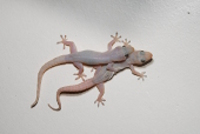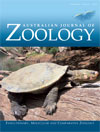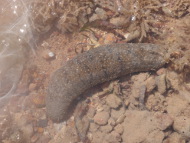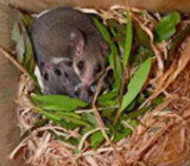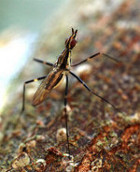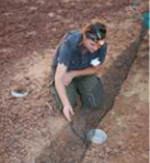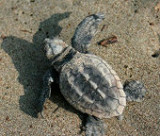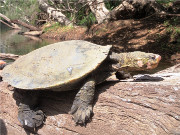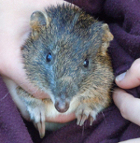Australian Journal of Zoology
Volume 60
Number 6 2012
The introduced Asian house gecko has spread rapidly in human-altered landscapes in Australia. It has been argued that it may negatively impact native geckos. We examine a large ecological dataset that shows the Asian house gecko’s potential to negatively impact more natural ecosystems is minimal, as it is not invading these areas.
Photo by Eric Vanderduys.
We used 454 pyrosequencing to isolate 18 new polymorphic microsatellite markers from Holothuria scabra, a commercially important species of sea cucumber found throughout the Asia-Pacific region. These loci should be useful for investigation of population structure and mating systems in H. scabra and potentially in other holothurian species.
Photo by Mike Gardner.
We conducted a field experiment to examine nest box preferences by the eastern pygmy-possum. Breeding females showed an avoidance of a horizontal design relative to three vertical designs. Adult males and subadults showed no preference. This species may be more reliant on tree hollows than previously recognised.
Photo by Niels Rueegger.
We used simulated data to quantify the statistical power of three goodness-of-fit procedures (G, Chi-square and Watson’s U2) for testing non-uniformity in the annual distribution of mammalian births. In general, power was low, but was influenced by several factors under the control of the researcher. We recommend using power analysis as a research planning tool, and have provided a spreadsheet for this purpose.
The neriid fly Telostylinus angusticollis is being developed as a model organism for experimental research on developmental plasticity, nongenetic inheritance, ageing and sexual selection. To facilitate paternity analyses for experimentation, we characterised 17 polymorphic microsatellites based on MiSeq sequences. We show that MiSeq can be used successfully to develop microsatellites.
Photo by Russell Bonduriansky.
This paper presents guidelines for trapping and handling small mammals, which can be used by researchers and teachers, and provided to their Animal Ethics Committee. Procedures are detailed, but generally not prescriptive, and allow for adaptation to different conditions.
Photo by Sophie Petit.
This study shows how nest temperature affects the phenotype of genetically similar populations of loggerhead turtles at two rookeries: La Roche Percée in New Caledonia and Mon Repos in Australia. Differences were found in mean hatching success and emergence success, and the hatchlings from La Roche Percée also had significantly lower fitness characteristics.
Photo by Tyffen Read.
We used microsatellite markers to uncover a high incidence of multiple paternity in the white-throated snapping turtle, Elseya albagula. Our work provides the first example of multiple paternity in the family Chelidae and extends our knowledge of the taxonomic breadth of multiple paternity in turtles of the Southern Hemisphere.
Photo by Erica Todd.
Mammals that forage for food by digging can act as ecosystem engineers. Foraging by southern brown bandicoots (Isoodon obesulus) was estimated to displace more than 10 kg of soil daily (~3.9 tonnes per year). The digging activities of bandicoots are likely to be critical for maintaining soil processes.
Photo by Peter Valentine.
